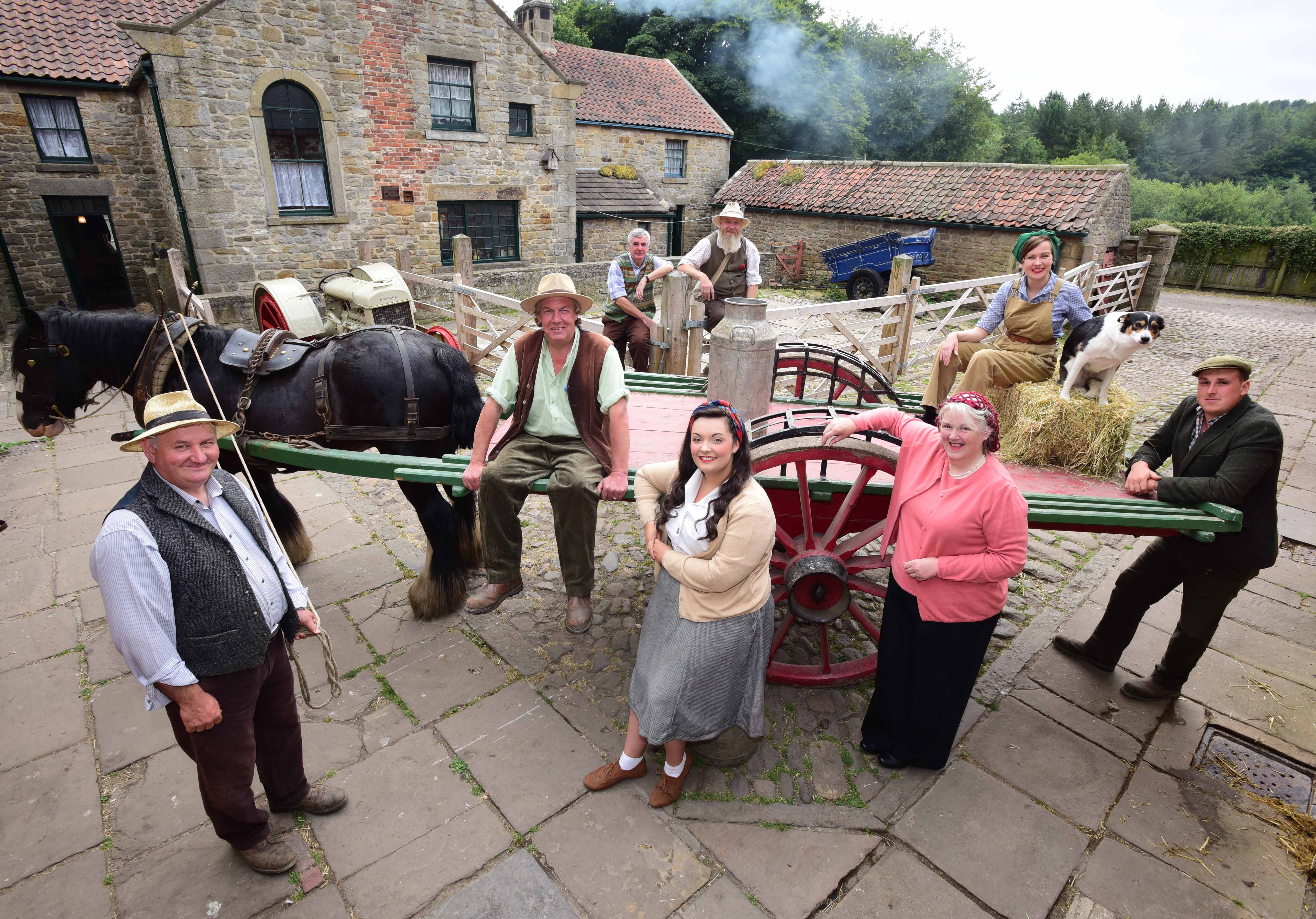In January I attended a Reap the Rewards seminar at Beamish open-air museum, which tells the story of life in North East England.
We were met at the reception inside a former train station building. From here, we took a short tram ride down to the main street in the 1900s town, glimpsing some of Beamish along the way, including the exciting development of the new 1950s town. Our seminar was held inside the old bank building and although very cold we had amazing views of the town outside, with passing trams and buses.
The day began with a tour of the main stores from Senior Keeper Seb Littlewood who explained some of the challenges faced with storing a collection that includes some huge items of machinery and transport. He explained how they authentically use original objects in the living museum and when parts become worn down they are repaired or gradually replaced, using traditional techniques. Seb took us to the 1940s farm which originally began as an 1800’s farm. This particular exhibit had the lowest visitor figures and so the museum decided to change the farm to an early-1900s farm. Again they found that people were not visiting this area as much as others, and so after further research and looking at the strengths in their collection they developed a 1940s farm instead. They discovered that they could work with local people to uncover new stories about a 1940s farm as it was still in living memory and also people from further afield had interesting memories to share about their experiences on farms as evacuees.
It was interesting to hear how a museum has tried different approaches without giving up, after facing difficulties. There were so many strong stories ready to be told and they finally found the perfect way to share them. This was inspiring and reassuring to know that failure can be used to create new ideas and opportunities. It is important to look at the strengths in your collection, but also to think about how you can work with communities and local people to build on your collection of objects, ephemera and oral histories to share new narratives with your audience.
During the afternoon session, we discussed contemporary collecting in rural museums. It was interesting to hear about the different approaches that rural museums are taking to collect objects. Lots of similar issues arose such as caring for different types of objects and identifying whether objects are relevant to your collection when there is no specialist knowledge in the organisation. This is where the Rural Museum Network is really useful as it can provide a forum for specialists and non-specialists to share ideas about collections and organisations can ask for advice in identifying and caring for objects.
Gemma Bailey is Community Heritage Curator at Craven Museum & Gallery and trustee for Yorkshire & Humberside Federation of Museum and Galleries.
Founded in 1928 by local collectors and enthusiasts, Craven Museum has over 60,000 objects, spanning geology, archaeology, natural history, and social history of work and home life. Celebrating the story of the Craven Dales, the eclectic and varied collection is located in the historic Skipton Town Hall, High Street Skipton and is managed by Craven District Council. The Museum is currently being redeveloped thanks to the National Lottery Heritage Fund which will increase the accessibility of the Museum and the collection, as well as create new and innovative displays to tell the stories and showcase the treasures of the Craven Dales.

